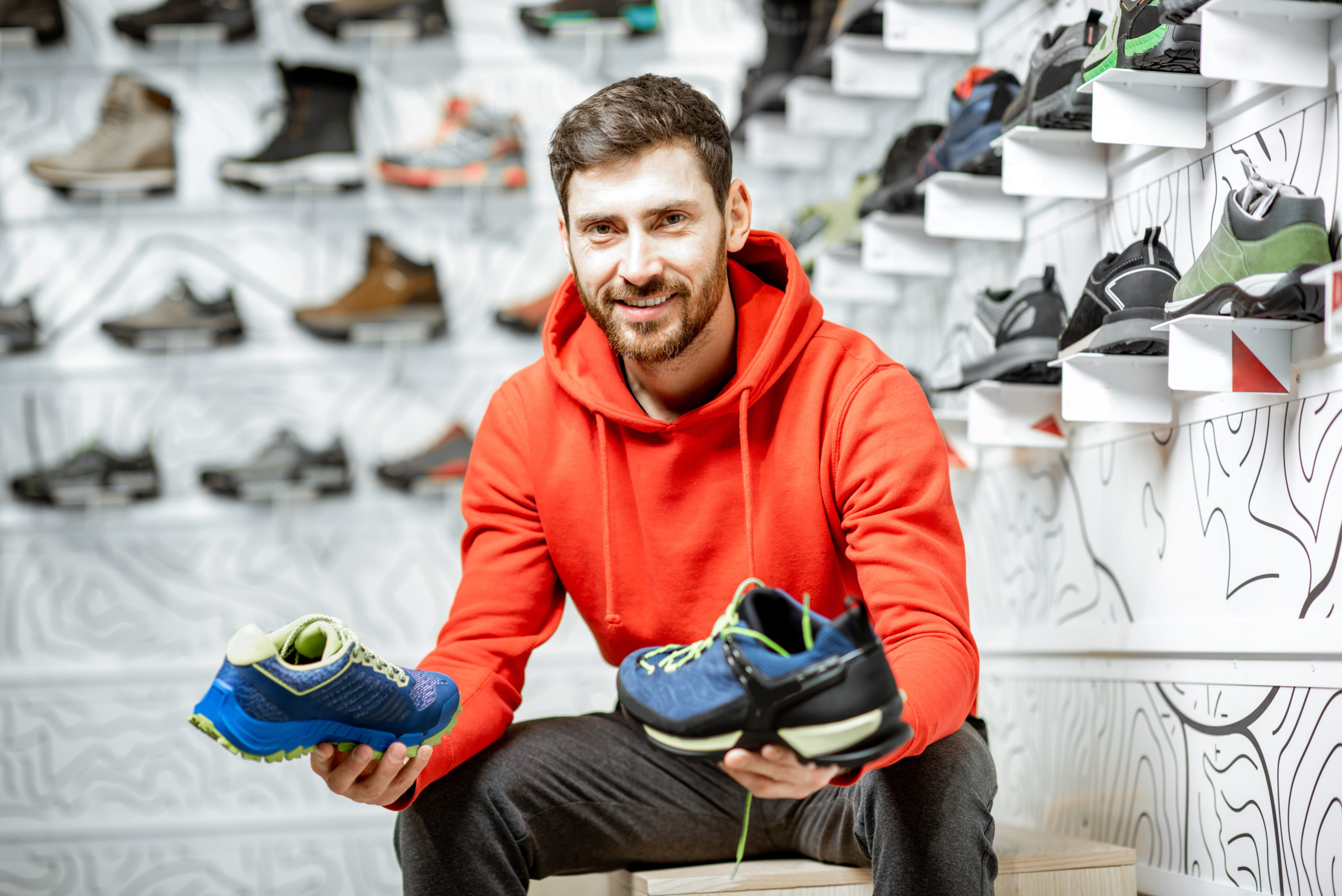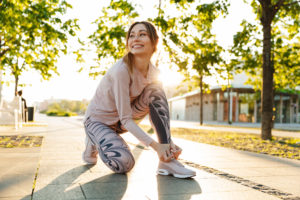
Find the best running shoes and your ‘solemate’ this spring
Last updated on September 30th, 2021
Did you know that spring is the ideal time to buy running shoes at good prices?
No, this isn’t a sales pitch. It’s actually when stores start selling off their winter collection and try to lure customers in with hot deals, so you can get great running shoes at low prices.
However, with so many options available, it pays to do your homework.
Always choose shoes that offer you comfort and stability, as these play an important role in preventing running-related injuries.
Here are some tips for finding the perfect pair, so you can hit the ground running.
What’s new in running shoes?
One of the recent trends is the focus on cushioning material. For instance, Adidas has introduced a midsole that consists of thousands of small energy capsules. These store and release energy while running.
Uppers are another trend. They are knitted and seamless and almost look like socks. They sit on top of the midsole and wrap the foot completely. A soft upper allows the foot to bend in different directions and prevents the rubbing of toes.
Heel collars are another thing to look for in your new running shoes. They form the top of the shoe and help prevent injuries by keeping your feet from slipping.
What kind should I get?
There are five main types of running shoes to choose from, according to your needs:
1. Lightweight shoes
If you do plenty of speed workouts, such as racing or jogging, then lightweight shoes are ideal. They are also known as cross-country spikes or racing flats and are perfect for speed workouts such as fartlek, sprints, and intervals.
2. Trail shoes
Trail runners are usually required to navigate rocks, mud, dirt, and many other off-road obstacles. These activities demand running shoes with the best support, protection and stability. Trail shoes are designed for a wide range of terrains and provide the needed support.
3. Stability shoes
Stability shoes are usually for runners who have neutral feet or normal arch. They are also made for people who require a mix of good support and midsole cushioning. They can also help reduce or prevent excessive pronation (foot rolling inward as it lands).
4. Motion control shoes
People pronate differently and excessive pronation can be dangerous. Motion control shoes are generally made to limit pronation. They are recommended for runners who have serious overpronation and low arches.
5. Cushioned shoes
As the name suggests, cushioned shoes are built with extra cushioning to provide a plush feel but without too many corrective elements. They are ideal for runners with little pronation, and provide shock absorption and protection.

How do I choose the right ones?
There are a few other steps worth taking before you buy:
-
- Do an online gait analysis to measure your rate of pronation.
- Do the squat test, as it helps you figure out which shoe is the best fit based on your running style.
- Consider a higher heel for a better bounce and less stress on your calves.
- Always consider your running distance.
- Checked the return policy, especially if you are buying them online.
Can I wear them for other sports?
Running shoes should not be used for any other sports. They are specifically designed for running and every part of them caters exclusively to that activity. And while their lightweight mesh uppers are perfect for running they are not as durable as shoes for other sports, and wear out quickly. However, they can be used for walking because of their lightweight and comfortable design.
How should running shoes fit?
A perfectly fitting pair of running shoes must feel snug in your midfoot and heel with some wiggle room around the toes. Once you stand up, make sure to check the width and length by pressing your thumb down around your toes and right next to the ball of your foot. A perfectly fitting shoe will allow for space that will be at least half or full width of your thumb.
Next, hold the back of your shoe and raise your heel. There shouldn’t be any room for movement. Lastly, make sure the eyelet rows on each side are parallel with each other. Remember, your running shoes will not stretch out but they will conform to your feet.
What is the risk of wearing ill-fitting shoes?
Choosing the wrong size can be dangerous and cause injuries. If your shoes do not fit your feet perfectly, the chances of injury automatically increase. Wearing the wrong size can also worsen existing problems, such as arthritis or pain in your knees, hips, or feet.
Which running shoes are worth my money?
Buying shoes should be an investment in comfort from the start to the end of the shoe’s life. Buy shoes that don’t pinch or squeeze your feet and have a great reputation online for being able to last the distance.
Some of our favorite shoes of 2021 are:
-
- Nike ZoomX Vaporfly Next 2 are great running shoes due to their springiness. They are made for both casual and fast running and contain a minimalist and breathable mesh style.
- Asics Metaspeed Sky shoes are a great choice. They are built for both short and long-distance running. They give you a controlled feel while running.
- Adidas SL20 are affordable and lightweight, with a responsive foam and continent rubber outsole.
- Brooks Hyperion Tempo are light and comfortable but a bit more expensive.
- Nike Air Zoom Pegasus 37 are perfect for everyday use, as well as walking, training, and jogging.
- Asics Metaracer are some of the best running shoes for women and are perfect for moderate to long-distance races.
- Hoka One One Carbon X is one of the best running shoes for men. These are ideal for long jogs, as well as daily and tempo runs.
- Saucony Kinvara 12 are the ideal shoes for interval training, fast training, and tempo runs.
How much should I be spending?
One of the most important things to remember before buying running shoes is that they do not equate price with suitability. A common misconception is that the most expensive shoes are always the best. That is not true! It all depends on what fits you the best. On average, you shouldn’t spend more than $150 to $200 on running shoes.
Where are the best places to shop?

Some of the best places to buy running shoes include your local stores, from official websites of trusted brands such as Nike, Adidas, and Brooks, as well as Amazon, and running warehouses. Always check the return policy before buying, particularly if buying online.
Can I return them if they hurt or I don’t like them?
Almost all the manufacturers let you return your running shoes within two to four weeks if you haven’t worn them out. They might accept worn shoes, but usually only if they are damaged or faulty at the time of purchase because the Australian Consumer Laws require them to. However, you can’t return your running shoes if you don’t like them or want another colour, unless change of mind purchases are allowed. As above, always check the return or exchange policy before handing over your hard-earned money.
How often should I replace my running shoes?
Running shoes usually have a good lifespan of between 450 km to about 700 km. The longevity depends on the surface you run on, your running style, and how you look after them.
If you're a regular runner you will need to replace your shoes every six months or sooner. If you run infrequently or use your running shoes mostly for walking, your shoes shouldn’t start wearing out for at least a year. Even then, you should be able to get at least a few more months out of them before you need to replace them. Write the date you start using a new pair of shoes on the inside of one shoe so you can track when they need replacing — and also determine whether that brand was worth the spend next time.
How do I know when it’s time to replace them?
There are many signs your running shoes are worn out. These include experiencing pain while running, poor shock absorption, worn-out treads, and uneven fitting or wear. If you run on rough surfaces or roads you will need to replace your running shoes sooner than other surfaces.
Need help?
If you've bought a pair of running shoes and they don't live up to the hype or their price tag, we can help you handle your complaint.






